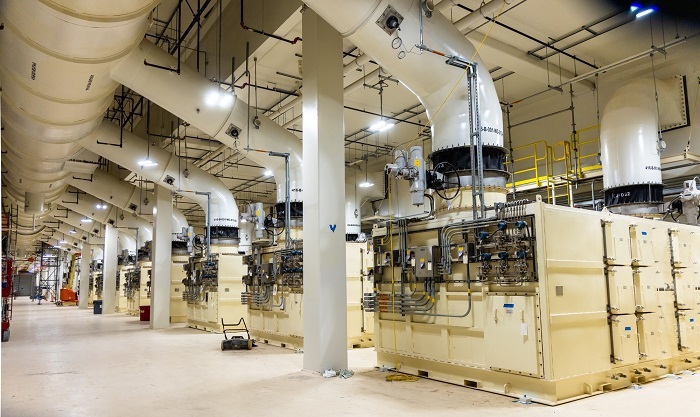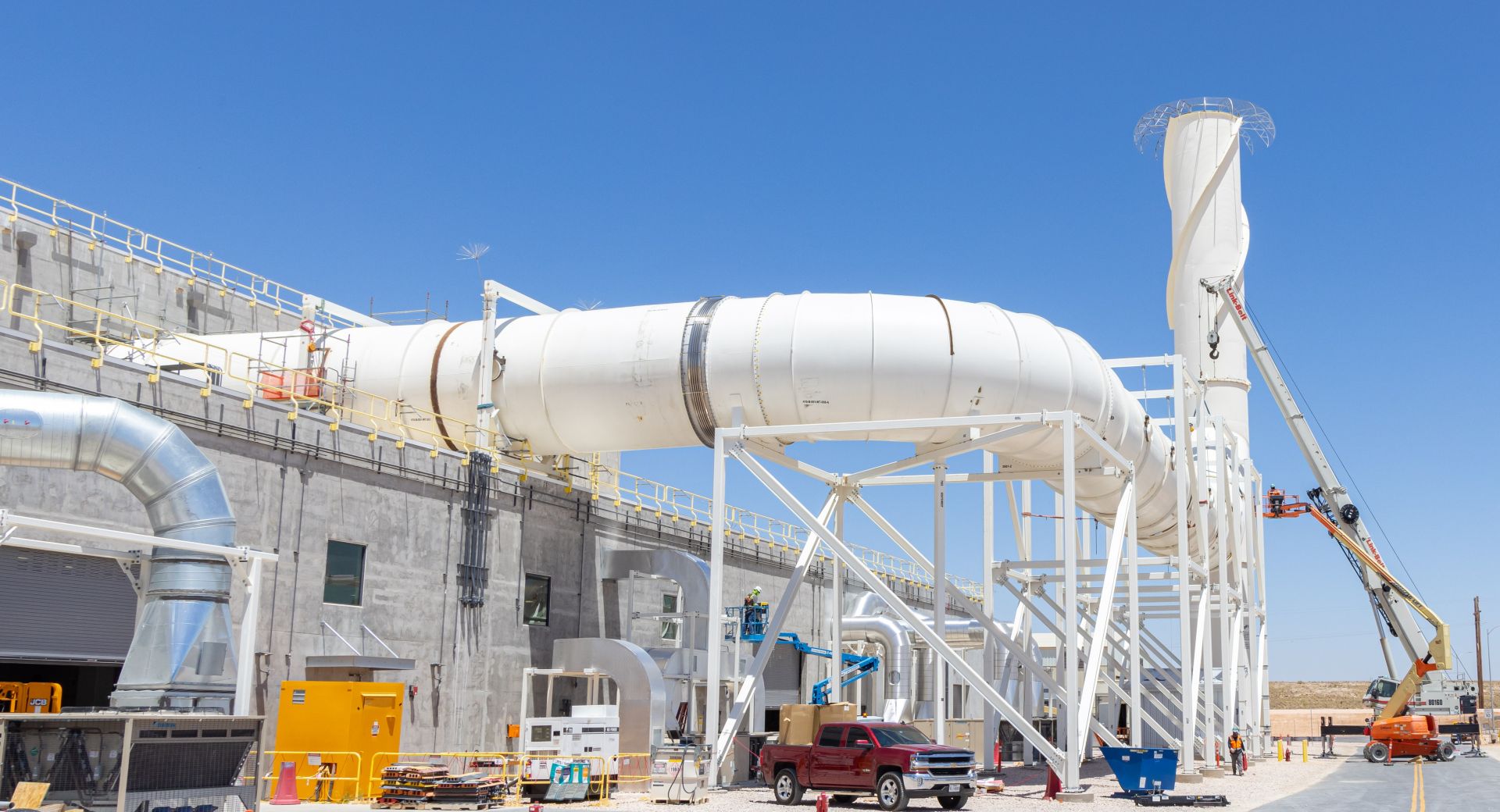HEPA filters located within the Safety Significant Confinement Ventilation System facility at the Waste Isolation Pilot Plant. (Photo: DOE)
The Department of Energy’s Office of Environmental Management announced that it has completed the commissioning of a new, nearly $500 million, large-scale ventilation system at its Waste Isolation Pilot Plant, the DOE’s geologic repository for defense-related transuranic waste in New Mexico.
Construction crews finish work on large ductwork for WIPP’s new SSCVS facility. (Photo: DOE)
The Department of Energy’s Office of Environmental Management announced that it has completed construction of the new large-scale ventilation system at its Waste Isolation Pilot Plant in New Mexico.
A 125-foot-tall exhaust stack towers over the Safety Significant Confinement Ventilation System’s filter building at the Waste Isolation Pilot Plant. (Photo: DOE)
The Defense Nuclear Facilities Safety Board (DNFSB), an independent government organization responsible for overseeing public health and safety issues at Department of Energy defense nuclear facilities, has alerted the DOE because of safety concerns it has regarding the use of continuous air monitors (CAM) at the Waste Isolation Pilot Plant in New Mexico.
Part of WIPP’s new Safety Significant Confinement Ventilation System (SSCVS), the CAM system is intended to detect a radiological release in the repository and automatically close vent dampers to prevent the escape of radioactive particles to the outside environment. The SSCVS, which began commissioning in November 2023, is intended to increase airflow to the underground to allow for simultaneous underground waste emplacement, mining, and ground control work.
Electrical circuits are tested during the commissioning of the new ventilation system at WIPP. (Photo: DOE)
Commissioning has begun on a new large-scale ventilation system at the Waste Isolation Pilot Plant in New Mexico.
The Safety Significant Confinement Ventilation System (SSCVS) is expected to increase underground airflow from 170,000 cubic feet per minute up to 540,000 cfm. The increased airflow will allow for simultaneous underground waste emplacement, mining, and ground control work. Ground control, including bolting, controls the movement of salt rock—known as salt creep—in the WIPP underground.
Workers construct a new ventilation system's filter building last year at WIPP. (Photo: DOE)
Without a plan for addressing issues in completing construction projects at the Waste Isolation Pilot Plant in New Mexico, the Department of Energy cannot ensure that further cost increases and schedule delays will not continue, according to a report by the Government Accountability Office. In particular, the GAO said, the DOE has not developed a corrective action plan to address root causes identified for the rising cost and the delay in building a new ventilation system at the transuranic waste repository.







